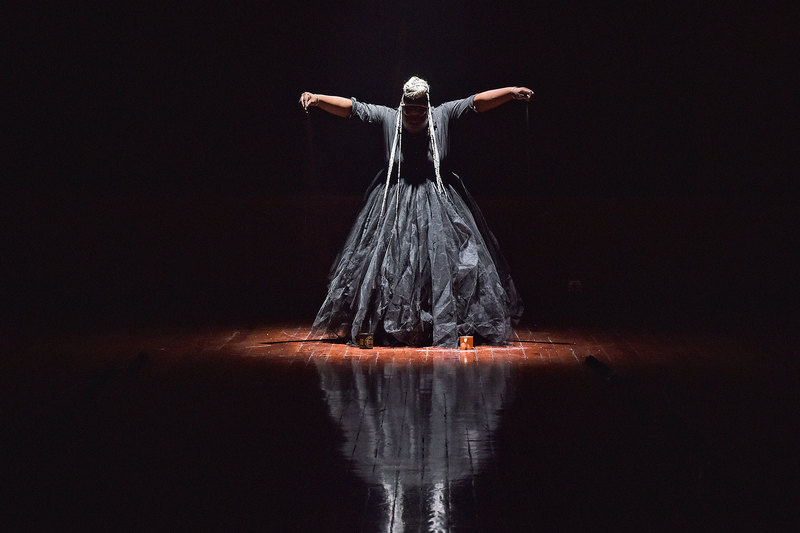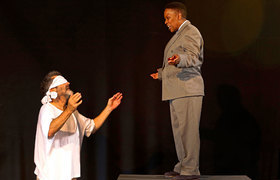Live Art Network Africa Gathering: fertile ground for intriguing conversations and chance encounters
23 March 2023 | Story Nkgopoleng Moloi. Photos Lerato Maduna. Read time 4 min.
From 16 to 19 February, audiences gathered at the University of Cape Town’s (UCT) Hiddingh campus to experience the Live Art Network Africa Gathering, organised by the Institute for Creative Arts (ICA). Capturing the magic of live art, the gathering brought together practitioners, artists, curators and writers to engage live art forms in their multiplicity.
Ambitious, evocative and profound interventions – with performers hailing from Cameroon, Ghana, Morocco, Algeria, Mozambique, South Africa and Nigeria – challenged audiences through an engagement with personal and historical narratives, interactions with public spaces as well as the use of new media and technologies. Conference sessions with themes ranging from production, education and dissemination of live art elaborated on the challenges faced by live art practitioners on the continent.
Wide-ranging in its presentation of live art methods, approaches and conceptual inquiries, the gathering offered varied interpretations of the transient art form. For instance, fragmentation, repetition and intricate visual arrangement of objects are at the core of Cameroonian artist Zora Snake’s practice, who uses his body to complicate narratives of colonisation and its aftermath. His work, Black Card, conceptualised during his first visit to South Africa, explored his new relationship with the country through a reflection on the complexities of freedom and the struggle for liberation.
Dancer and choreographer Nelisiwe Xaba, known and celebrated for her long-established pratice through which she challenges power dynamics and politics of display in relation to the body, collaborated with educator, filmmaker and researcher Mocke Jansen van Veuren in the production of FAKE News. The project reflected on the pertinent concepts of misinformation, conspiracy theories and science denialism that are rampant on social media and traditional media platforms.
Blending performance and digital art, FAKE News took seriously formal artistic concerns with an emphasis on tone, texture and composition of choreographed movements performed by a talented group of students. These works are indicative of the myriad offerings that touched on varying artistic concerns, something artists Qondiswa James, Kenza Barrada and Xaba reflected on during an artist talk.
Many artists who performed embraced interdisciplinarity, using an amalgamation of mediums and styles to produce site-specific works that respond to the context of the city – from Nigerian artist Jelili Atiku’s processional performance I am A Fish From The Sea to Ghanaian artist Bernard Akoi-Jackson’s DESTINATIONS – With Anthem for The Union (…and where, from birth, would they have berthed, should a dearth of destinations have prevailed?) audiences where called upon to collectively sense and participate in processes of healing and recovery.
Other offerings included Retch by Qondiswa James (South Africa); In the Wake by Meghna Singh & Simon Wood (India / South Africa); Boujloud: Man of Skins by Kenza Berrada (Morocco); Koulounisation by Salim Djaferi (Algeria/Belgium); and The Black Circus of the Republic of Bantu by Albert Ibokwe Khoza and Princess Zinzi Mhlongo (South Africa).
 This work is licensed under a Creative Commons Attribution-NoDerivatives 4.0 International License.
This work is licensed under a Creative Commons Attribution-NoDerivatives 4.0 International License.
Please view the republishing articles page for more information.























































